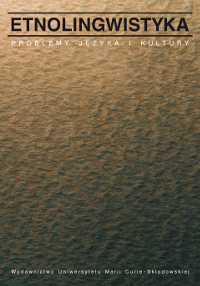Tęcza. Nazwy i znaczenie w kontekście litewskiej narracji folklorystycznej
THE RAINBOW: ITS NAMES AND MEANING IN THE CONTEXT OF LITHUANIAN FOLKLORE NARRATION
Author(s): Nijole LaurinkieneContributor(s): Kazys Linka (Translator)
Subject(s): Language studies, Language and Literature Studies, Customs / Folklore, Applied Linguistics
Published by: Wydawnictwo Naukowe Uniwersytetu Marii Curie-Sklodowskiej
Keywords: FOLK IMAGES OF THE WORLD; LITHUANIAN FOLKLORE; MYTHOLOGY
Summary/Abstract: The names of the rainbow and their meanings, found in Lithuanian texts of folklore (especially in legends and beliefs), have made it possible to reconstruct Lithuanian folk images of the rainbow: its appearance (the shape of an arch, colourfulness, vividness), functions (sucking of water, a symbol of reconciliation between God and people), connections with God and mythical figures, such as 'Lauma' (a creature associated with water, a goddess) and the Dragon. The figures, whose water-related nature was considered important, were often presented as representatives of the rainbow. The mythological figure of the rainbow was attributed with power over waters on earth and in heaven, with controlling the link between them. In Lithuanian folklore, the rainbow is an intermediary, a liaison between the natural forces of the earthly and heavenly waters. Construed as a cosmic band, its function is to connect, embrace, or girdle the world.
Journal: Etnolingwistyka. Problemy Języka I Kultury
- Issue Year: 16/2004
- Issue No: 16
- Page Range: 215-239
- Page Count: 25
- Language: Polish

